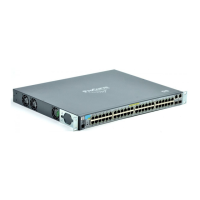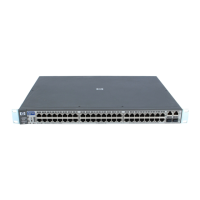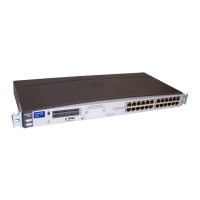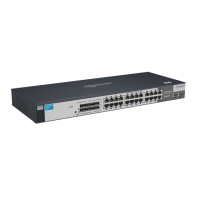Port Status and Basic Configuration
Jumbo Frames
■ Jumbo Traffic Sources: A port belonging to a jumbo-enabled VLAN can
receive inbound jumbo frames through any VLAN to which it belongs,
including non-jumbo VLANs. For example, if VLAN 10 (without jumbos
enabled) and VLAN 20 (with jumbos enabled) are both configured on a
switch, and port 1 belongs to both VLANs, then port 1 can receive jumbo
traffic from devices on either VLAN. For a method to allow only some
ports in a VLAN to receive jumbo traffic, refer to “Operating Notes for
Jumbo Traffic-Handling” on page 10-22.
Configuring Jumbo Frame Operation
Command Page
show vlans 10-20
show vlans ports < port-list > 10-21
show vlans < vid > 10-22
jumbo 10-22
Overview
1. Determine the VLAN membership of the ports or trunks through which
you want the switch to accept inbound jumbo traffic. For operation with
GVRP enabled, refer to the GVRP topic under “Operating Rules”, above.
2. Ensure that the ports through which you want the switch to receive jumbo
frames are operating at least at gigabit speed. (Check the Mode field in the
output for the show interfaces brief < port-list > command.)
3. Use the jumbo command to enable jumbo frames on one or more VLANs
statically configured in the switch. (All ports belonging to a jumbo-
enabled VLAN can receive jumbo frames.
4. Execute write memory to save your configuration changes to the startup-
config file.
10-19
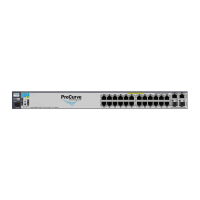
